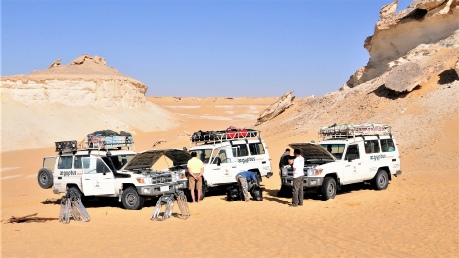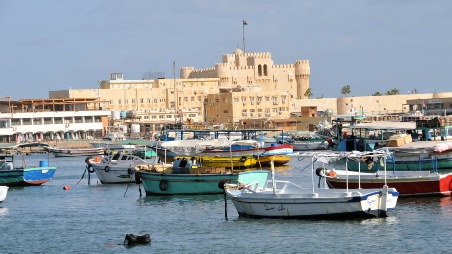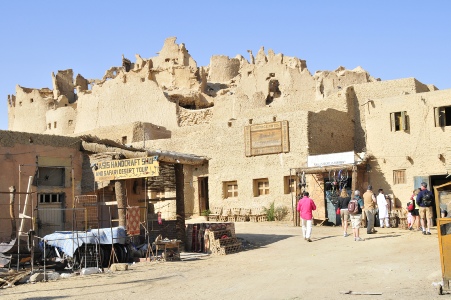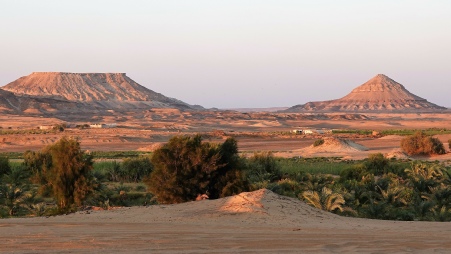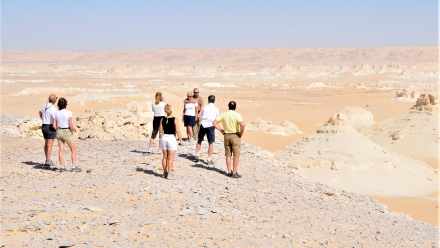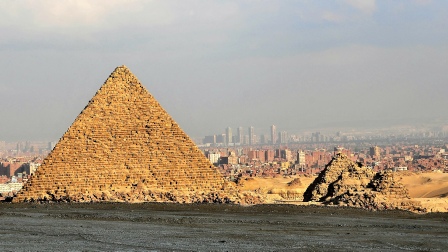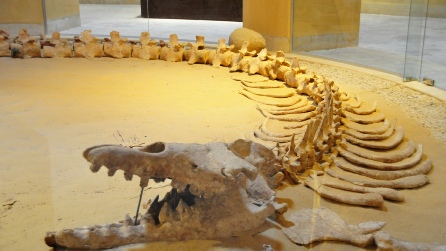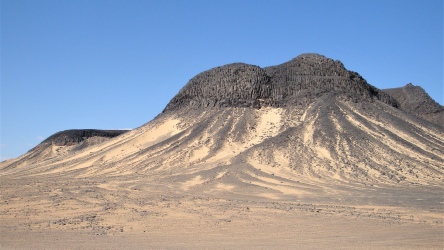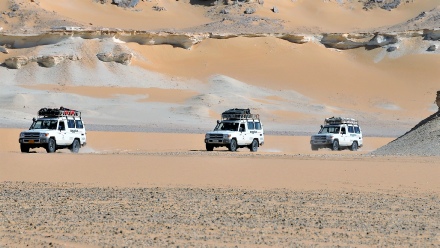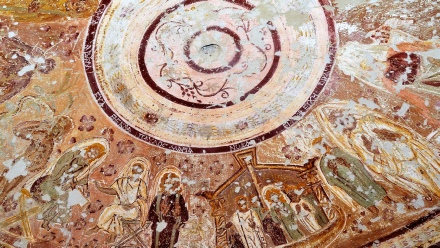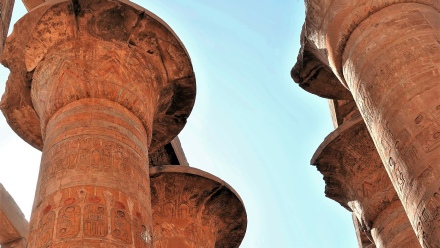
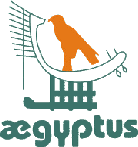
Your partner for Egypt and Nubia
|
Jeep Safari and Expeditions We organize jeep safari (5-14days) or walking tours (4-7days), as well as camel caravans (4-10days) through the colorful canyons and high mountain ranges of Sinai or the oases of the Western Desert with their characteristic culture. Visit Siwa, Baharija, Farafra, Kharga and Dakhla, and cross the Great Sand Sea or the White Desert. Our programs also include expeditions to Gilf el Kebir and Djebel Uweinat. Our programs are designed as independent modules that can be combined with each other or one or two days in Cairo to see the Pyramids and the treasures of the Egyptian Museum. There is also the possibility of attaching some days in Luxor to see Karnak temple and the Valley of the Kings, or have a relaxing time on the beach in Sinai or Hurghada. We will help you to find the program best suited to your clients’ needs and your flight schedule. We operate all tours with a min. of 2 pax per group at any given time. All the mentioned itineraries by 4x4 Toyota land Cruiser, fully air-conditioned, all seats are facing forward and equipped with seat belts; every 4x4 will be equipped with sand mats, spare tires, fire extinguisher. With each group we send a first aid kit, cool box, GPS device and satellite telephone. Our drivers have years of experience in desert trips and are familiar with every kind of terrain. They know the Egyptian deserts by heart and are accomplished mechanics. They also prepare excellent, well-cooked dinner at the end of each day’s tour. During adventure trips accommodation are tents (for 2 persons) with bottom covering and mattresses. We provide kitchen utensils and upon request sleeping bags as well. The western oases have simple but clean lodges which can be used for some nights instead of tents; most rooms are equipped with baths/WC. In towns we provide hotel accommodation of your choice. Trekking Tours and Camel Caravans: Surrounding the Western oases are areas well known for their scenic beauty, which provide ample opportunity for walking trips, accompanied by pack or riding camels. There is, for example, the “Wadi Mushroom”, with its typical white limestone formations resembling mushrooms, which is only a part of the White Desert. Then there is Djebel el Makhroum, a rock formation with a natural hole, and its surroundings, as well as Khayyam el Inglis with its tent-shaped rocks. Walks begin after breakfast, for app. 2-3 hrs. After lunch the walk can be continued for another 2 1/2 or 3 hrs until one hour before sunset, when the camp is made. Tents and bags are unloaded, and everybody prepares his or her sleeping place in the tent by daylight. Beneath the sparkling stars a hot soup and a hearty Egyptian-style meal is dished out. The bedouin prepare dinner bedouin style, with bread baked in the ashes (Libda), and sometimes sweet pancakes (Faraschih). After dinner there is singing and music with hand drums and double flute (Arghul). The starlight and the fire’s warmth make an unforgettable setting for a gregarious evening. EG 2c The Egyptian Oases IV A 10-day journey through the northern oases of the western desert with Cairo and Alexandria Day 1: Europe - Cairo Arrival at Cairo airport, transfer to hotel. Hotel overnight in Cairo. (D) Day 2: The Grand Museum and Giza After breakfast we visit the Grand Egyptian Museum. The largest archaeological museum complex in the world, houses more than 100,000 artifacts. For the first time, King Tut's entire treasure collection is on display alongside artifacts ranging from prehistoric times through the many thousands of years of Egypt's pharaonic civilization to the more modern ancient Greek and Roman periods of Egyptian history. Afternoon drive to the Pyramids of Giza. The pyramids of Cheops, Chephren and Menkaure are the hightest in Egypt and classic examples of pyramid architecture. They tower on a high plateau at the edge of the western desert. The ancient Egyptians believed that this was the entrance to the realm of the dead. Next to the pyramids we admire the Sphinx. The rock-sculpted hermaphrodite with a lion's body (symbol of courage) and a human head (spiritual strength) guarded the tombs of the pharaohs and was intended to deter grave robbers. In the figure of the Sphinx, theologians see the primal creature humbled before God. Then stroll through the lively Khan el Khalili Bazaar. Hotel accommodation. (BD) Day 3: Kairo -Wadi Natrun - Alexandria On the way to Alexandria we visit some of the monasteries of Wadi El Natrun, which date back to the fourth century and were one of the stops of the Holy Family. In Alexandria we see Fort Qaitbey and the new Bibliotheca Alexandrina. Hotel overnight in Alexandria (BD) Day 4: Alexandria - Siwa Early morning departure on the coastal road, passing el Alamein to Siwa, hotel overnight in Siwa. (BLD) Day 5: Siwa After breakfast exploring the oasis: After a short stop at Cleopatra’s bath visit to the acropolis of Shali, rising within the new capital of Siwa, the temple of Amun, the temple of Amasis and Aghurmi and Gebel Mawta. Overnight at hotel. (BLD) Day 6: Siwa - Bahariya All day drive to the Bahr bila Ma (the “Waterless Sea”) to Bahariya oasis. Hotel overnight in the small oasis of Qasaa. (BLD) Day 7: Bahariya ~ Palms, Hills and Archaeology Today's tour starts with a drive through the fields of Qasaa to our nearby camel farm, where one can see the good-natured black camels of Bahariya. Afterwards short drive to the hills of Gebel Dist and Maghrafa - the "pot" and "ladle" hills, landmarks of El Qasaa. Drive through palm gardens to the old oasis capital of El Qasr, with a picknick lunch at a panoramic spot on the way. In Bawiti visit to the small museum housing some of the "Golden Mummies", and to the tombs of Panentiu and his father at Qaret Selim. Afterwards drive to the chapels of Muftella and to the temple of Alexander. Hotel overnight in Qasaa. (BLD) Day 8: Black Desert - El Heiz - White Desert - Bahariya In the morning drive through the desert, passing Bir Matar - called the airport well after a helicopter landing spot in WWII - into the less well known but very impressive Black Desert, best seen at Gebel Marsus. From here we proceed to the small oasis of El Hayz that was settled in Greco-Roman times. Remains of a church and several other buildings can still be seen. After Lunch drive south into the famous White Desert. At "El Sillim", the "staircase" near Agabat we leave the road and drive into the heart of the White Desert and to Wadi Mushroom, famous for its mushroom shaped rocks. Ample opportunity to take photos and walk around. After a sunset dinner in Bedouin style drive back to Bahariya, hotel overnight in Qasaa. (BLD) Day 9: Nature Reserves ~ Wadi Rayan and Wadi Hitan Departure by jeep through the outlying areas of Bahariya to Fayum, an oasis that was cultivated during the reign of the pharaohs. Proceed to Wadi Rayan, where a branch of the Nile pours into the Qarun lake, and then to the National Park of Wadi Heitan. The fossilized bones of ancient sea mammals have given the area its name of “Valley of the Whales”. Afterwards drive to Cairo. Hotelovernight. (BLD) Day 10: Departure Transfer to Cairo airport and final departure. (B) EG 2d The Egyptian Oases V A 9-day journey through the Western Desert and Nile Valley Day 1: Europe - Cairo Arrival at Cairo airport, transfer to hotel. Hotel overnight in Cairo. (D) Day 2: The Grand Museum and Giza After breakfast we visit the Grand Egyptian Museum. The largest archaeological museum complex in the world, houses more than 100,000 artifacts. For the first time, King Tut's entire treasure collection is on display alongside artifacts ranging from prehistoric times through the many thousands of years of Egypt's pharaonic civilization to the more modern ancient Greek and Roman periods of Egyptian history. Afternoon drive to the Pyramids of Giza. The pyramids of Cheops, Chephren and Menkaure are the hightest in Egypt and classic examples of pyramid architecture. They tower on a high plateau at the edge of the western desert. The ancient Egyptians believed that this was the entrance to the realm of the dead. Next to the pyramids we admire the Sphinx. The rock-sculpted hermaphrodite with a lion's body (symbol of courage) and a human head (spiritual strength) guarded the tombs of the pharaohs and was intended to deter grave robbers. In the figure of the Sphinx, theologians see the primal creature humbled before God. Then stroll through the lively Khan el Khalili Bazaar. Hotel accommodation. (BD) Day 3: Nature Reserves ~ Wadi Rayan and Wadi Hitan - Bahariya Departure by jeep to Fayum, an oasis that was cultivated during the reign of the pharaohs. Proceed to Wadi Rayan, where a branch of the Nile pours into the Qarun lake, and then to the National Park of Wadi Heitan. The fossilized bones of ancient sea mammals have given the area its name of “Valley of the Whales”. Proceed through the outlying areas of Bahariya to the small oasis of Qasaa. Hotel overnight. (BLD) Day 4: Bahariya ~ Palms, Hills and Archaeology Today's tour starts with a drive through the fields of Qasaa to our nearby camel farm, where one can see the good-natured black camels of Bahariya. Afterwards short drive to the hills of Gebel Dist and Maghrafa - the "pot" and "ladle" hills, landmarks of El Qasaa. Drive through palm gardens to the old oasis capital of El Qasr, with a picknick lunch at a panoramic spot on the way. In Bawiti visit to the small museum housing some of the "Golden Mummies", and to the tombs of Panentiu and his father at Qaret Selim. Afterwards drive to the chapels of Muftella and to the temple of Alexander. Hotel overnight in Qasaa. (BLD)
Day 5: Bahariya - Black Desert - El Heiz - White Desert - Farafra In the morning drive through the desert, passing Bir Matar - called the airport well after a helicopter landing spot in WWII - into the less well known but very impressive Black Desert, best seen at Gebel Marsus. From here we proceed to the small oasis of El Hayz that was settled in Greco-Roman times. Remains of a church and several other buildings can still be seen. After Lunch drive south into the famous White Desert. At "El Sillim", the "staircase" near Agabat we leave the road and drive into the heart of the White Desert and to Wadi Mushroom, famous for its mushroom shaped rocks. Ample opportunity to take photos and walk around. overnight. (BLD) Day 6: White Desert – Farafra - Dakhla In the morning two hours walk through the White Desert near Wadi Mushroom and its famous mushroom-shaped rocks, with enough opportunities to linger and take photos. Afterwards drive to Farafra, visit to the local museum. You will have the possibilities to bathe in the springs. After lunch drive to Dakhla and visit to the old town of El Qasr with its covered walkways and carved door lintels. Overnight at a lodge. (BLD) Day 7: Dakhla - Kharga - Luxor Drive through dune landscape to Kharga. Kharga is the largest and most popular oasis in the Western Desert. It is also the most developed oasis thanks to the government support for the modernization of the oases in the Western desert. The necropolis of El-Bagawat is one of the oldest Christian cemeteries in the world. Most tombs consist of simple crypts built of mud bricks. In the cemetery are paintings showing Noah's Ark in the form of an Egyptian barque. Also of note are carved depictions of Old Testament Scriptures, including Adam and Eve, Daniel in the lions' den, the sacrifice of Abraham, and Jonah being swallowed by a fish. Construction of the Hibis Temple began during the 26th Dynasty, under Pharaoh Psamtik II. Later rulers up to Roman times took an active part in the construction. Continue to Luxor. Hotel accommodation. (BLD) Day 8: Luxor Early this morning we cross the River Nile to the West Bank. Your first visit will be to the Valley of the Kings, the necropolis of the Pharaonic New Kingdom, including the famous tombs of the kings of ancient Egypt. Your next stop will be the amazing temple of Hatshepsut, which was used as a monastery in the Christian era. Your last stop of the day will be at the gigantic Colossi of Memnon. These two 18 meters high statues are the only remaining items of the temple of Amenhotep III. After Lunch You will start your visits by exploring the Karnak Temple, the largest religious Pharaonic temple ever built in the world, then visit the Luxor temple as well, which was dedicated to the Theban Triad of Amun, Mut, and Chons. Day 9: Departure Transfer to Luxor airport and final departure. (B) |
|
|
|
|
|
|
|
|
|
|
|
|
|
|
|
|
|
|
|
|
|
|
|
|
|
|
|
|
|
|
|
|
|
|
|

